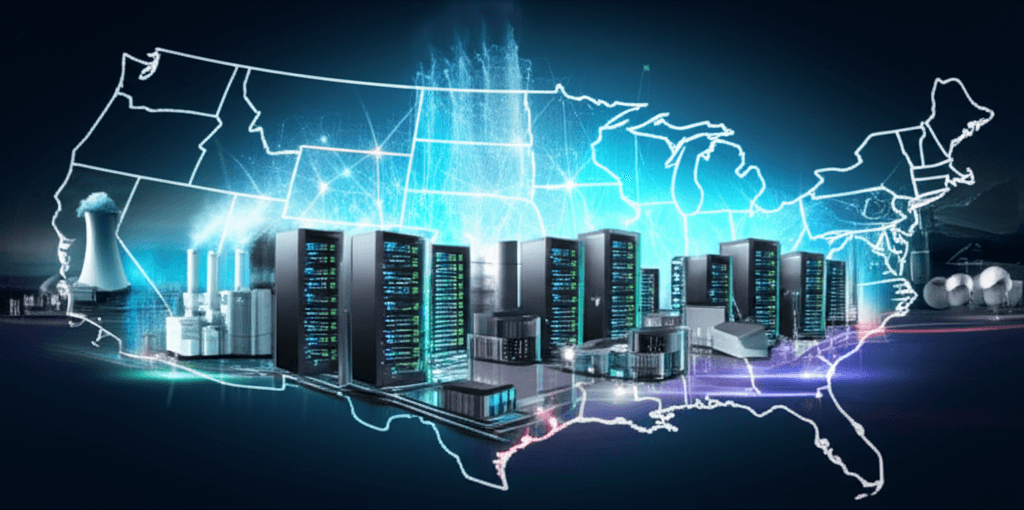US Launches AI 'Manhattan Project' with Four Federal Data Sites
Addressing AI's surging energy demands, the US taps federal sites and private firms to accelerate innovation and outpace rivals.
July 29, 2025

The Department of Energy has unveiled the first four federally owned sites slated for the development of artificial intelligence data centers, a move the Trump administration is framing as a critical step in securing American leadership in both AI and energy innovation.[1][2][3] The selected locations—Idaho National Laboratory, Oak Ridge Reservation in Tennessee, the Paducah Gaseous Diffusion Plant in Kentucky, and the Savannah River Site in South Carolina—will be opened to private sector partnerships to construct and operate these massive computing facilities and associated energy infrastructure.[4][5][6] This initiative is a cornerstone of a broader federal strategy to leverage government-owned land and resources to accelerate the buildout of the nation's AI capabilities, a sector with exponentially growing energy demands.[1][7] Energy Secretary Chris Wright likened the effort to a new "Manhattan Project," emphasizing its importance for national security, economic competitiveness, and grid reliability.[1][7][5][6][2][3]
The selection of these specific sites was informed by a Request for Information (RFI) issued in April, which garnered significant interest from private industry.[1][7] The chosen locations are considered well-suited for large-scale data centers due to factors like available land, existing infrastructure, and the potential for new power generation.[1][7][3] Two of the sites, Idaho National Laboratory and Oak Ridge Reservation, are already home to national laboratories, hinting at opportunities for technological collaboration and leveraging existing scientific expertise.[8][9] The Paducah and Savannah River sites are former gaseous diffusion plants, offering large tracts of land with pre-existing, robust infrastructure.[4][8] The administration’s plan emphasizes an "all of the above" energy strategy, with a particular focus on co-locating data centers with reliable power sources, including advanced nuclear reactors, geothermal energy, and natural gas.[9][10][11] This approach aims to address the immense and growing electricity consumption of AI, which is projected to more than double globally by 2030.[12]
This federal push is directly linked to recent executive orders aimed at accelerating the permitting process for data center infrastructure and promoting advanced nuclear reactor technologies.[1][9] President Trump's "AI Action Plan" outlines a comprehensive strategy to reduce regulatory hurdles, including streamlining environmental reviews and potentially lifting restrictions related to clean air and water laws, to fast-track construction.[5][12][13] The plan defines a "Datacenter Project" as any facility requiring over 100 megawatts of power for AI-related tasks, highlighting the massive scale of the anticipated developments.[6] The administration's goal is to begin construction by late 2025, with a target completion date by the end of 2027.[8] This aggressive timeline is driven by concerns that the U.S. could fall behind global competitors, particularly China, in the race for AI dominance, a sentiment echoed by many in the tech industry.[2][14]
The implications of this initiative for the AI industry and the broader economy are substantial. By providing access to federal land and fast-tracking permits, the government aims to alleviate key bottlenecks that have hampered private sector data center development, namely land acquisition and energy availability.[15][16] The plan has been met with applause from many in the technology and energy sectors, who see it as a vital step to ensure the U.S. has the necessary infrastructure to power AI's growth and maintain its competitive edge.[17] However, the initiative is not without its critics. Environmental groups have raised concerns about the potential rollback of environmental protections and the increased reliance on fossil fuels to power these energy-intensive facilities.[11][18] The plan's emphasis on "reliable dispatchable power" is seen by some as a move to prop up the coal and gas industries.[13][11] There are also questions about the capacity of the nation's aging electrical grid to handle the massive new load from these data centers, with some connection requests already facing years-long backlogs.[13][19]
In conclusion, the designation of these first four sites marks a significant and tangible step in the federal government's strategy to bolster America's position in the global AI landscape. By directly linking AI development with energy production and leveraging federal assets, the administration is pursuing an ambitious industrial policy aimed at overcoming critical infrastructure challenges. The success of this "AI Manhattan Project" will depend on the effective collaboration between the public and private sectors, the ability to rapidly scale up energy generation, and the navigation of complex regulatory and environmental considerations. The coming months, which will see the release of formal solicitations for private partners, will be crucial in determining the trajectory and ultimate impact of this transformative national initiative.[1][5]
Sources
[1]
[2]
[3]
[7]
[8]
[9]
[10]
[11]
[12]
[13]
[14]
[15]
[17]
[19]